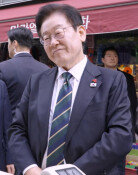[Opinion] Manufacturing Perceptions
[Opinion] Manufacturing Perceptions
Posted December. 16, 2006 08:03,
Den Force, a machinery company, is one of the companies that have entered China, known as the factory of the world. Most of the low price thermo-valves made with the cheap and abundant labor force of China are sold within China. But the company manufactures Mercedes style valves that require high-end technology and dexterous functions in Denmark. It also employs more workers in the factory in Denmark (6,200) than in that in China (1,700). Manufacturing high price goods and mid to low price goods in separate places, the company has adopted a hybrid strategy.
Many say nations with low wages like China or Vietnam are dilating their dominance in the manufacturing business of the world, but according to a Financial Times story, world class manufacturers make more effort in made-in-developed-states goods. Even with the dispatch of specialists from head office to monitor the manufacturing process, there is certain limit to the goods made by less trained workers. Mittal Steel, the strongest steel company in the world, allots the first stages of the production of high value added goods in the developing world and the completion stages in the developed world. These are two track tactics intended to prevent handing over core original technology to the developed world and lowering manufacturing costs to maximize profits.
This is why it is right but also wrong to say that the manufacturing era has gone and the service era has come. The more developed a nation, the bigger the proportion of the service business in GNP and the higher the ratio of the labor population occupied in that business, but the production in the manufacturing business becomes also higher. David Hensley, Director of. Global Economics Coordination at JP Morgan, says, The pie of the manufacturing business itself expands. To illustrate this, we see this ourselves using more goods such TVs or refrigerators. Although the production in the manufacturing business of China has increased sharply, it is merely an increase of 4% to 9% of the worlds production over the past decade. The power of the developed world, including the U.S., Japan and the Western Europe, in which production takes up 75%, is still unbeatable.
This aggravates the research by the Bank of Korea that one out of three manufacturing firms of Korea suffer deficits, and four out of ten cannot even pay the interests with the income from the sales. With the degeneration of the manufacturing industry, the engine of the economy, we cannot expect to be one of the leaders in globalization. We will only be able to survive when we add service plus alpha to the higher value-added technology goods. We have past the stage where we can compete through cheap wages. But then I still feel obliged to say this to managers and laborers making strenuous efforts as the first contributors to export. I appreciate your work again this year.
Kim Sun-deok, Editorial Writer, yuri@donga.com





![[단독]윤영호 “인수위서 尹 독대…尹 당선 안되면 미국 이민가려 했다”](https://dimg.donga.com/c/138/175/90/1/wps/NEWS/IMAGE/2025/12/25/133037156.1.jpg)

